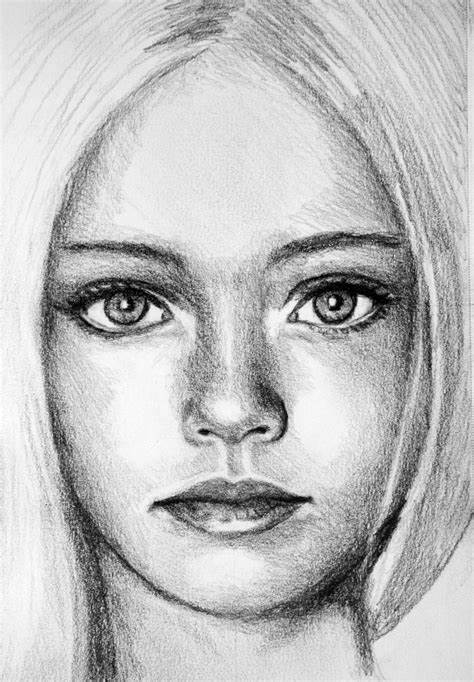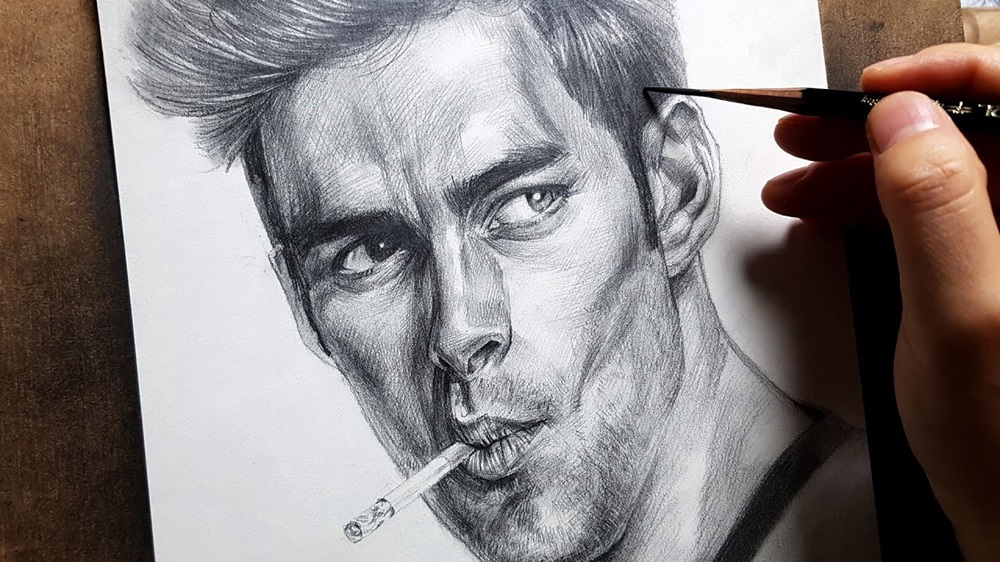How to Draw a Face
For both amateurs and artists, face sketching is a necessary ability that enables them to capture people’s distinct features and expressions. It entails expressing the feelings and personality of the face in addition to its measurements, proportions, and features. This essay will examine various approaches, aesthetics, and individual preferences in face sketching and show how they support the growth of this creative skill.
Understanding facial dimensions is necessary for successful face drawing. Methods such as the Loomis technique offer an organised way to comprehend the shape of the head. Using fundamental forms, such as a square representing the jawline and a circle representing the skull, painters can methodically identify the aspects of the face. Usually, the nose bottom lines up with the halfway point between the chin and eyes, and the eyes are positioned along the midway line of the head. To provide a balanced depiction of the face, the mouth is typically placed one-third of the way between the nose and the chin.
Artists use various techniques when drawing faces, yielding unique insights and outcomes depending on the style and goal. Because of its systematic approach, the Loomis method is preferred. It simplifies the skull into manageable geometric shapes, which helps painters better determine features’ alignment and proportions. With some observation and ingenuity, artists may draw realistically by knowing where to put the mouth, nose, and eyes. The goal of the semi-realistic style is to combine stylisation and realistic elements. The exaggeration of some facial traits by artists, including more enormous eyes and softer facial outlines, allows for a distinctive portrayal without sacrificing realism. This technique supports the production of funny, vibrant, and captivating portraits.

Artists tend to favour particular styles that align with their artistic voice. Understanding these styles can improve and enrich one’s drawing skills. In minimalist art, the focus is on simplicity and the use of fewer lines to portray critical features of the face. This style uses enough detail to indicate features, catching the subject’s spirit without overpowering the viewer. It frequently uses simple shading and lines, allowing for a more contemporary style that can subtly arouse feelings.
Cartoon styles like the classic Disney style emphasise bright hues and exaggerated features. With its happy characters and expressive faces, Disney’s legacy allows artists to use their paintings to create stories and feelings. Artists may explore this style without feeling obligated to adhere to rigid realism. Finding a way to make stylistic decisions that keep the fantasy realistic is difficult. Old masters like Paul Rubens used a method called “Trois Crayons,” which uses three colours—typically red, black, and white—on toned paper. This technique lessens the confusion of choosing between numerous possibilities while enabling a distinctive colour combination. It offers a novel method for painting faces that promotes imagination and colour experimentation.
Step-By-Step Tutorials
Artists must have a personal style that enables them to express themselves while perfecting their trade. When sketching faces, an artist’s approach, technique, and style can be significantly influenced by their preferences. A lot of artists would rather accept flaws or errors committed while drawing. This freeing method may produce unexpected outcomes that may pleasantly surprise the artist. Permitting yourself to stray from a strict plan fosters creativity and frequently results in more dynamic and captivating works. Because they enable colour, layering, and blending experimentation, coloured pencils can potentially promote individual artistic expression. When sketching, some artists find that coloured pencils produce softer results and a more organic appearance than graphite. Using this technique, artists can add colour to their portraits without sacrificing detail control.

Shading is an essential component of face drawing that gives the finished piece more depth and reality. Artists use various methods, like blending, cross-hatching, and hatching, to create a variety of textures and effects. The contrast produced by the shadows generated by facial features gives the impression that the subject is three-dimensional. For shading to be successful, one must understand the sources of light. Generally, light originates from above and casts shadows behind the nose, around the eyes, and chin. Artists can give their drawings a stronger sense of dimension and realism by adjusting light and shadow.
Face sketching is a broad discipline that blends methods, aesthetics, and individual preferences. Artists can hone their craft and produce powerful depictions of the human experience by learning and using various techniques. Artists who work with the drawn face develop their ability to strike a balance between inventiveness and accuracy, which results in a more expressive and satisfying artistic path. Every technique adds something different to the diverse field of face drawing, whether by utilising the Loomis method’s organised approach or examining the whimsical elements of cartoon drawings. The expression and ongoing development of the artist are what give any art its genuine beauty.





